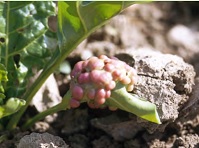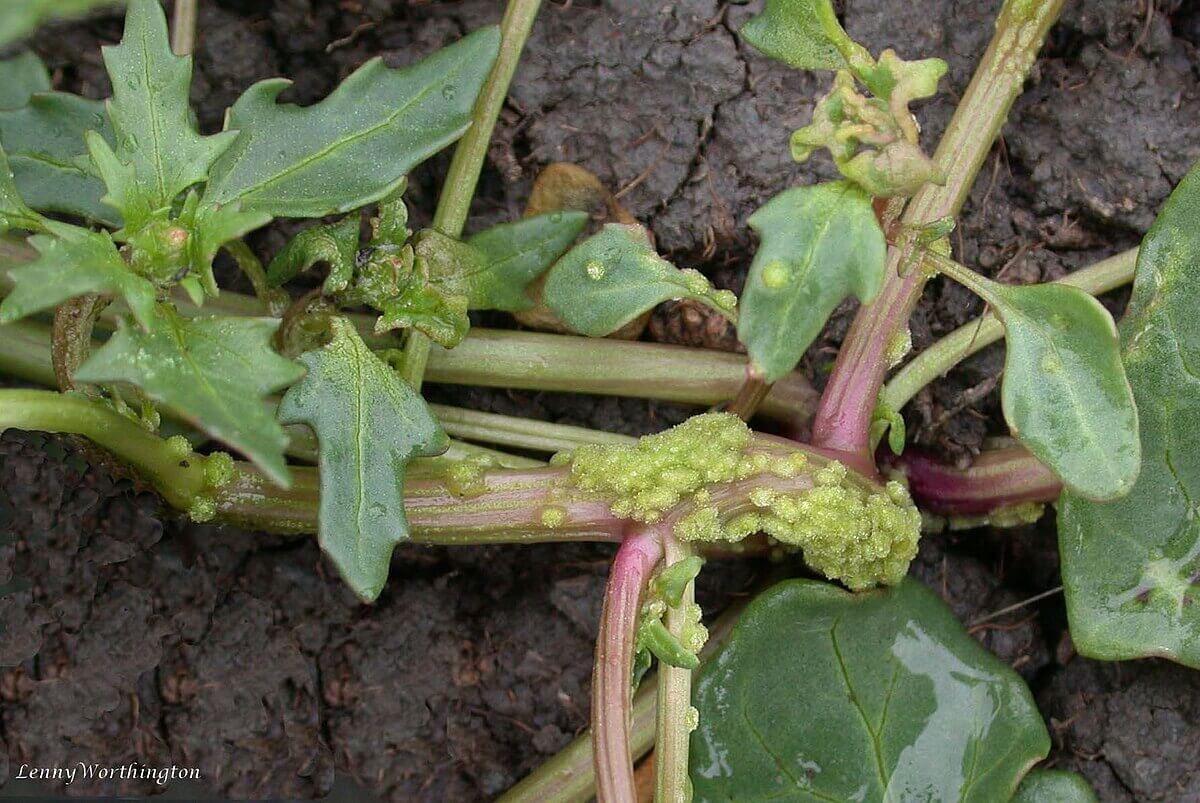
Remolacha de mesa
How to recognize and combat leprosy in beets
Leprosy
Fungus
Type:
Risk to the plant:
HIGH
Urophlyctis Leproides
Pathogen:

Micosis/Hongos
WHO CAUSES IT?
Urophlyctis leproides is a fungus that belongs to the chytrid group. This pathogen mainly affects table beets. Its cycle begins when the fungus's spores, called zoospores, swim in soil water in search of beet roots. Once they find a susceptible root, the zoospores attach to it and penetrate the root tissue. Inside the root, the fungus forms structures called sporangia, which release new zoospores as they mature. These zoospores can reinfect the same roots or spread to other nearby plants. Urophlyctis leproides can survive in the soil for several years in the absence of host plants, remaining dormant until conditions are favorable for infection.
SYMPTOMS
In table beets, Urophlyctis leproides causes the disease known as leprosy. This disease is characterized by the formation of nodules and galls on the roots and underground parts of the plant, which seriously affects the absorption of nutrients and water, and consequently, the development of the plant. The infection causes general weakness and a significant decrease in the quality and quantity of the crop.
- Formation of nodules and galls on the roots.
- Thickening and deformation of the roots.
- Delay in plant growth.
- Yellowing of the leaves.
- Reduction in crop yield.
- Development of Taches and lesions on the roots.
- Appearance of plants with stunted growth.
- Wilting in conditions of water stress.


DEVELOPMENT CONDITIONS
Temperature:
15°C - 25°C
Humidity:
70% - 90%
HOW IS IT SPREAD?
Irrigation water, Contaminated soil, Agricultural tools, Infected plant material, Wind, Animals and humans
HOW TO ELIMINATE IT?
Home treatments
There are no home treatments
Natural allies
Chemical treatments
There are no treatments for this disease. Treatments are directed at the insect vectors that transmit it. See insect treatments.
RECOMMENDED PRODUCTS TO ELIMINATE THE PEST
Sponsored link
Sponsored link
Sponsored link
Sponsored link
Sponsored link
Sponsored link
Sponsored link
Sponsored link
Sponsored link
Effective against all types of fungi
Sponsored link
Sponsored link
Sponsored link
Sponsored link
Sponsored link
Sponsored link
Sponsored link
REPELLENT PLANTS
RECOMMENDATIONS
















































